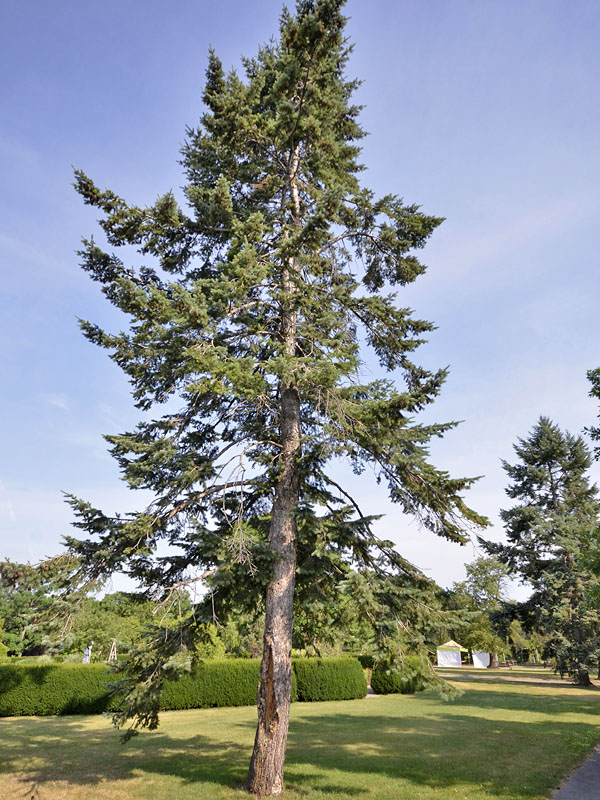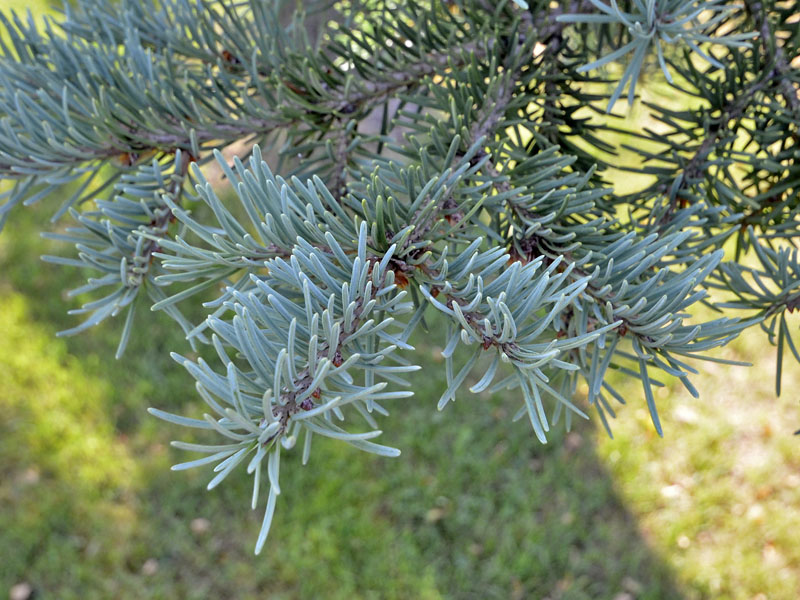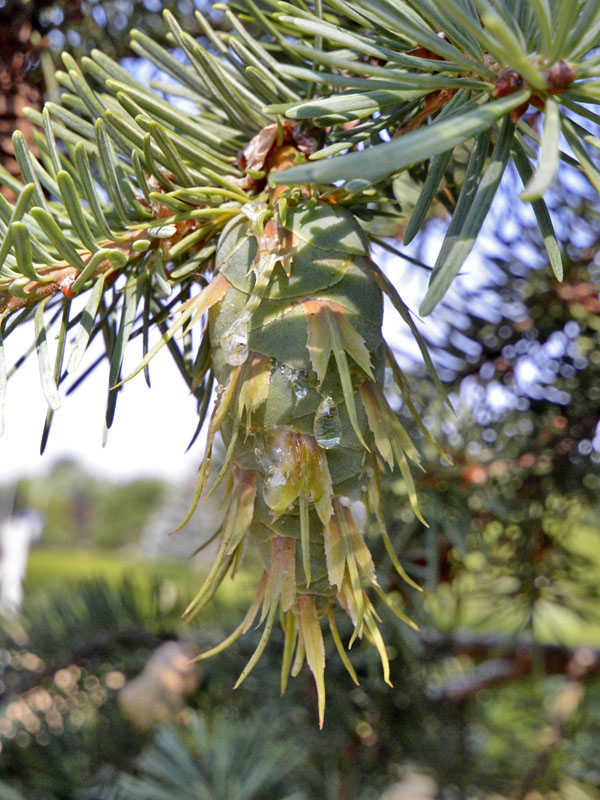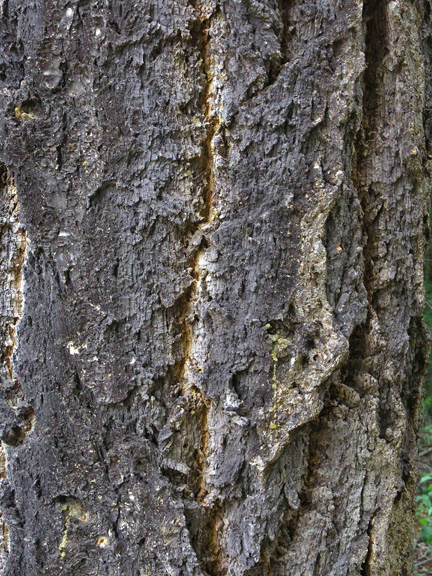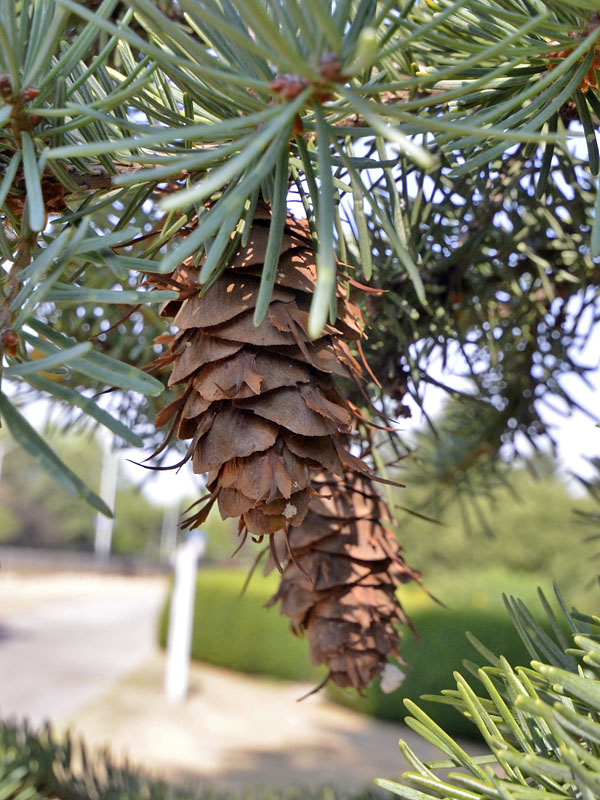
Woody > Pseudotsuga > Pseudotsuga menziesii > Pseudotsuga menziesii var. glauca
Pseudotsuga menziesii
var. glauca
Blue Douglas Fir
Origin: Native to North America and found in the Rocky Mountains and on the Pacific coast from B.C to Mexico. Introduced into cultivation in 1827. Introduced by Victorian plant collector David Douglas who was employed by the Horticultural Society of London (later to become the Royal Horticultural Society) in the 1920’s. Douglas was killed under suspicious circumstances on his return from the Pacific North-West via Hawaii in 1834 at the age of 35.
Mike's
Opinion


"
A beautiful specimen of evergreen that has a very soft feel to the needles, it is a very valuable source of food for animals on the west coast such as the blue grouse that will eat the needles.
Michael Pascoe, NDP., ODH., CLT., MSc. (Plant Conservation)
"
| Family |
| Pinaceae |
| Genus |
| Pseudotsuga |
| Species |
| menziesii |
| Category |
| Woody |
| Type |
| Tree (evergreen) |
| Variety |
| glauca |
| Pronunciation |
| USDA Hardiness Zone |
| 5A through |
| Canadian Hardiness Zone |
| 4-6 |
| Height |
| 13-16.25 m |
| Spread |
| 4-14 m |
Photographs
Description and Growing Information
Flowering Period
| General Description |
| Twigs are brown to grey, smooth, finely pubescent with scattered short hairs. |
| Landscape |
| Very ornamental under cultivation, an excellent specimen suited to grouping or mass planting. It also makes an excellent short needled Christmas tree. |
| Cultivation |
| Start seeds outdoors in containers in spring. Pseudotsuga menziesii thrives in full sun and is intolerant of shade. It likes a moist but well-drained soil with a pH between 3.7 and 6.5. Douglas Fir is not tolerant of dry soil. It has a moderate to fast growth rate. It tolerates pruning and shearing, and should be protected from exposure to strong winds for the best appearance. |
| Shape |
| Symmetrically pyramidal with a moderate crown density. |
| Growth |
| Medium |
| ID Characteristic |
| Alternate and simple leaf with a blue to blue green colour and a filiform needle-like shape. |
| Pests |
| Aphids infestations on small trees may be dislodged with a strong stream of water from the garden hose. Scale and bark beetles may infest Douglas-Fir, especially those under stress. Root rot can be a serious problem on clay and other wet soils. Needl |
| Habitat |
| Mountains ranging from 600m altitude up to 300m |
| Bark/Stem Description |
| Bark on young trees is thin, smooth grey and covered with resin blisters while on mature trees it is moderately thicker, furrowed and corky. |
| Flower/Leaf Bud Description |
| Distinctive narrow conically shaped buds, 3-6 cm long. |
| Leaf Description |
| Short needles that are spirally arranged slightly twisted at base covered in a light bloom. |
| Flower Description |
| Pollen cones are typically restricted to or more abundant on lower branches. Pollen cones develop over 1 year with the pollen being wind-dispersed pollen is released for several weeks in the spring. |
| Fruit Description |
| Cones are pendulous, oval-ovoid, 9.5cm - 10.5cm long by 4.8cm to 6.5cm broad, with 3 pronged bracts between the scales. Cones are light brown in colour. |
| Colour Description |
| Foliage typically a bluish-green. |
| Texture Description |
| A medium textured tree. |
| Notable Specimens |
| Niagara Parks Botanical Gardens. |
| Propagation |
| Seeds will germinate without pretreatment although success may very with the seed source. |
